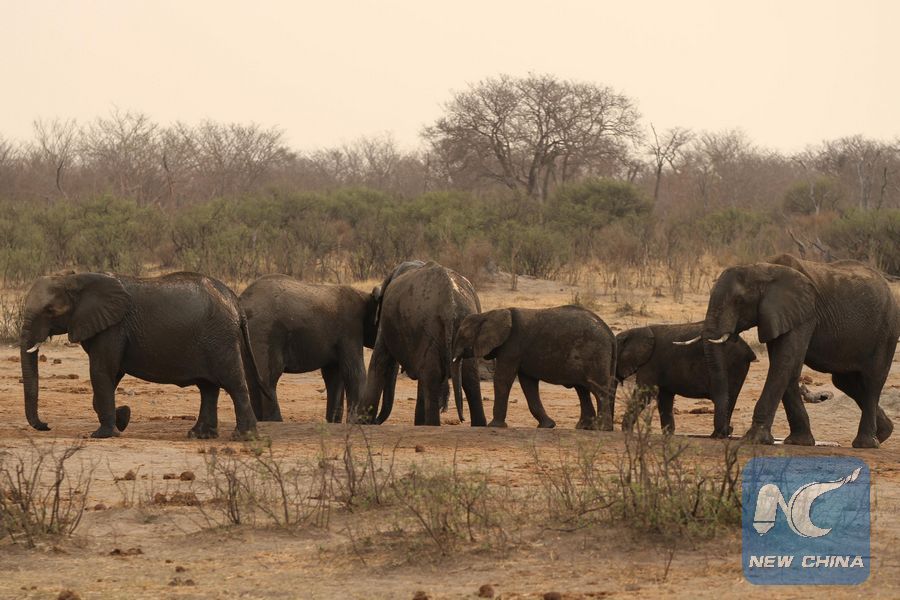
A herd of elephants is seen at the Hwange National Park in Hwange, northwest Zimbabwe, Sept. 29, 2015. (Xinhua)
HARARE, Jan. 6 (Xinhua) -- Zimbabwe has exported 35 African elephants to China, the Zimbabwe Parks and Wildlife Management Authority (Zimparks) announced Thursday.
Zimparks spokesperson Caroline Washaya-Moyo said the animals were translocated from Hwange National Park in north-west Zimbabwe on Dec. 23, 2016 following an assessment by Zimparks and an animal welfare organization on the suitability of the final destinations in China.
"This was done after a team from Zimparks and a chief inspector from Zimbabwe National Society for the Prevention of Cruelty to Animals (ZNSPCA) traveled to China to inspect the facilities and conditions under which the elephants were going to live."
She said the team assessed Shanghai Exhibition Park, Beijing Wildlife Park and Hangzhou Wildlife Park and was satisfied that the translocation process could go ahead.
"Convention on International Trade in Endangered Species (CITES) and national rules and regulations pertaining to the live sales were religiously followed." she said.
"The process of crating and ground transport and loading of elephants into the air cargo was monitored and observed by various stakeholders who comprised national security agencies and ZSPCA," she added.
Zimbabwe's live sales of elephants to international destinations are done to generate financial resources for conservation programs.
Animal rights activists have in the past expressed concern over the exportation of live animals from Zimbabwe, saying that in some instances the animals endured difficult conditions en route to their new homes.
Zimparks in late 2016 stopped the exportation of 11 hyenas to China following concern over their health and the flouting of transportation procedures.
Zimbabwe has previously exported about 60 baby elephants aged between two and four years to China and Thailand, with each elephant fetching between 40,000 and 60,000 U.S. dollars.
Washaya-Moyo said destinations for any live sales underwent thorough suitability assessments, a prerequisite for CITES, before any translocations occurred, and followups were made to any destinations to ensure compliance to international best practice.
The elephants were escorted as per CITES requirements by a wildlife specialist, wildlife veterinarian and elephant keeper.
Zimbabwe has an elephant population of over 83,000 --the second highest in Africa -- with Hwange National Park carrying over 45,000 against an ecological carrying capacity of 15,000.
Gonarezhou National Park is also over-populated with more than 11,000 against an ecological carrying capacity of around 5,000.
"This scenario has led to severe ecological damage that has affected other wildlife species."
She said the high elephant population resulted in severe environmental degradation, loss of bio-diversity and increased competition for scarce resources and causing some elephants to be pushed to the peripheries of the parks where they became vulnerable to poaching.

